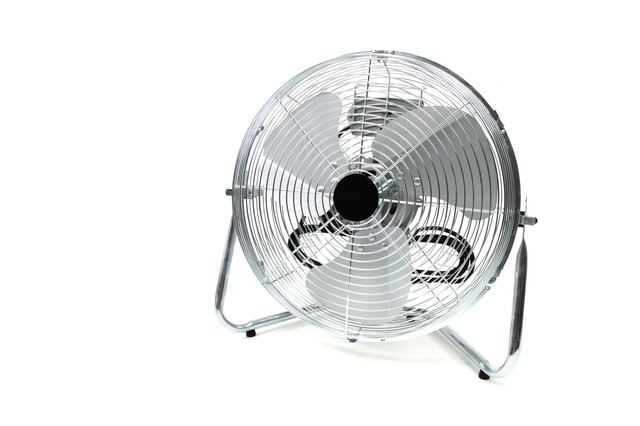
Sennheiser HD600 Review – The Best Reference Headphone
Sennheiser HD600 Open Back Professional Reference Headphones
Pros
- Purely Analytical Sound Profile
- Best Of Its Class For Critical Listening
- Refreshing Ear Cup Ventilation
- Secure & Comfy Headphone Clamp
- Laser-Focused Detail Imaging
Cons
- Only Available In The Black/Gray Color Scheme
- Uses A Proprietary Headphone Cable
- Soundstage Is Slightly Narrow & Condensed
They’ve been called “Sennheiser’s flagship”, a “timeless classic”, and “legendary”. Do these open back reference headphones live up to their reputation – or fall short? Many listeners and audio professionals consider this model to be one of (if not the best) reference cans of all time.
Despite being manufactured over 20 years ago, they remain a popular choice among casual fans and audiophiles. Before you decide if you should add a pair to your own headphone collection – there are a few important performance features to consider.
Keep reading our Sennheiser HD600 Review to see how these cans have managed to remain completely relevant after all these years!
Our Sennheiser HD600 Review

Features & Technical Specs:
- Circumaural (over-ear) open headphone design
- Delivers transparent, clean sound perfect for critical listening
- Driver Type: Neodymium Dynamic
- Impedance: 300 Ohms
- Frequency Response: 12 Hz – 39 kHz
- Sensitivity: 97 dB/mW
- Includes: Detachable Kevlar-reinforced OFC 3.5 mm cable + 1/4″ adapter
- Cable Length: 9.1 ft.
- Weight: 9.12 ounces
Before you move on, take a quick look at the links below that you can use to navigate our review. Each section will provide an in-depth analysis of each individual performance aspect.
Here are the 4 most important performance features you’ll want to consider before making your decision:
- Build Quality & Durability
- Comfort – Long-Lasting or Short-Lived?
- Sonic Performance – Analytical vs. Boring
- Who Are These Reference Cans Perfect For?
Now that you’ve taken a quick look at the technical specs, let’s start by examining two of the most important features – build quality and durability.
Build Quality & Durability
These cans have a very simple and straightforward design. Their black and gray glossy finish looks similar to a darker granite countertop. They are extremely lightweight and weigh significantly less than other similarly-built open-back cans.
Open Back Ear Cups & Sound Leakage
The outside of each ear cup has a metal mesh earpiece covering the neodymium driver housed inside. They are open back cans that are more open than average which allows for a significant amount of sound leakage. It also plays an important role in their playback performance which we’ll cover in more detail below.
Headband Design
The headband is constructed of all metal (aside from the black and gray glossy finish). As you adjust the headband, you’ll notice a slightly muffled (but satisfying) click. On the bottom of the headband where the ‘phones will sit on your head, there are 4 individual pads.
The choice to use individual pads instead of a single strip of padding like the Sennheiser HD 598 SR have, adds to the overall wearing comfort. (Don’t worry, we’ll cover that in more detail further down.)
Ear Cushions & Covering
The soft ear cushions plus the extremely open ear cup design contribute not only to the lightweight build but comfort as well. You won’t experience any overheating at all. Both ear cups are so open, that you can hear literally everything around you and even feel a breeze pass through.
The ear cushions are also fully replaceable if you ever need to replace them for any reason. The included ear cushions are covered with the same soft velour covering that’s also used on the outside of each individual headband pad.
9.1 Foot Proprietary Headphone Cable
You’ll also receive a proprietary 9.1-foot headphone cable with specific connectors that plug into each ear cup. The right connector has red on the end and the left has a black indicator. Some people aren’t the biggest fans of Sennheiser’s proprietary cables since they can be hard to find a replacement for – although it would be pretty hard to accidentally misplace a 9-foot cable.
One benefit of the proprietary cable design is that it provides an even electrical signal to both ear cups. The length and cable design contributes to their even-keeled playback performance and also allows for more freedom of movement.
Proprietary 1/4″ Adapter
The included 1/4″ adapter is also proprietary. It’s slightly different than most 1/4″ adapters since it doesn’t have any threading on the inside that you would use to screw the 3.5 mm end into. Instead, you just plug the 3.5 mm end directly into the adapter. It fits more like a sleeve or glove over the 3.5 mm connector. It’s easy to pop on and off but isn’t quite as aesthetically pleasing as other 1/4″ adapters you may be using currently.

Inside the cable itself is OFC (oxygen-free copper) wiring that’s commonly used in high-end speaker wires. OFC cables have an enhanced level of conductivity and transfer electrical signals more efficiently than other cable types. The outside of the cable is covered with Kevlar-reinforced material that has a nice, durable feel.
Comfort – Long-Lasting or Short-Lived?
Does the lightweight build make these cans perfect for long listening sessions? Is the comfort short-lived or long-lasting? Keep reading to see exactly if and how they excel in this area.
Headband Clamp & Weight Distribution
The level of headband clamp is very secure but doesn’t apply too much pressure around your ears. When you quickly turn your head or lean over to grab a drink, these cans will stay firmly in place.
The choice to use 4 individual headband pads definitely pays off in terms of comfort. They’re able to provide much more even weight distribution across the top of your head. So much so, that you will probably forget you’re wearing them.
Both the ear cups and headband fit snugly and will form to the contour of your head. It is little (if any) need to constantly readjust them once you’ve put them on. Although they do feel light and comfy right out of the box, you’ll want to read the section below for more details.
For some, the ‘phones might seem a little bit stiff at first but over time, you’ll notice that they start to form and fit your specific head size/shape. Similar to breaking in a new pair of new shoes – the more you wear them, the better they fit.
Ear Cup Ventilation
As we mentioned above, the ear cups are as open as physically possible. For example, if you have a fan directed at your head while you’re listening to music, the air will have enough room to pass through and cool your ears off.

This serves a great purpose as it maintains optimal comfort but also means that any and all ambient noise will also have room to travel through. It’s not necessarily a negative feature since these cans were intended to be used in quiet studio or at-home environments.
Overall, the fairly minimal build design and lightweight materials used to construct these cans ultimately make for an impressively comfortable listening experience. Even after wearing them for a few hours, they maintain the same level of comfort you felt when you first put them on.
Sonic Performance – Analytical vs. Boring
One fairly common misconception about describing a headphone as ‘flat’ or ‘analytical’ is that it is often confused with meaning ‘boring’ or ‘lifeless’. These cans are anything but ‘lifeless’ or ‘boring’ – and here’s why.
The dynamic drivers with neodymium magnets housed inside each ear cup create a much more sensitive headphone that will respond to the smallest electrical currents. Despite utilizing dynamic (instead of planar magnetic) drivers – the audio playback you’ll experience is about as even as it gets.
They have a sensitivity level that makes them ideal for use as reference cans or listening in your dedicated HiFi listening room. Their purely analytical sound profile largely contributes to their innate ability to accurately represent each and every element present on a track. Let’s take a closer look at the difference between ‘analytical’ and ‘boring’.
Analytical vs. Boring
If you only listen to headphones with a v-shaped sound signature, you might be taken aback by the extremely flat response these have to offer. By flat, we mean they don’t over-emphasize the lows, mids, or treble in any way.
Instead, they present you with an extremely accurate representation of the music you’re listening to. They have what’s called a ‘true-to-the-track’ or ‘authentic’ sound profile. This is why they’re such a great pair of reference cans.
For example, when you’re thinking about buying a new pair of headphones – you can do a side by side comparison between these and the ‘phones you have your eye on. Using them as a reference point in this way allows you to clearly hear what areas your other cans tend to highlight or accentuate.
If one pair of headphones tends to over-emphasize the bass or treble, you will immediately hear the difference. It can be extremely helpful for accurately pointing out what type of headphone you do or don’t like. That way, the next time you’re thinking about grabbing a new pair of cans – you will have a great point of reference (rather than crossing your fingers and hoping for the best).
Are They a Good Reference Can For The Studio?
While these cans are great for finding a baseline reference point – they aren’t perfect for every use. If you mix/master or record music, keep in mind that they aren’t great for monitoring during the actual recording process. Why not? Every sound happening around you will leak in and disturb the instrument/vocalist you’re recording.
On the other hand, when you’re strictly mixing and mastering – they perform exactly as you need them to. Their purely analytical quality is perfect for finding inconsistencies or mismatched levels that you might miss otherwise.
Well-Balanced, Authentic Playback
Now that you understand the difference between ‘flat’ and ‘boring’, let’s take a look at how the lows, mids, and highs are represented.
The lower frequencies are fairly represented and have an immediate, fast, and above all – clean quality. At times, there is a slight mid-bass hump that’s hardly noticeable at all.
The mids are very smooth and accurate, sitting evenly alongside the lows and treble. They manage to remain flat and slightly forward, even across a wide range of genres.
In the upper range, highs sound extremely detailed and accurate. There are no sharp peaks or other inconsistencies and they never become even close to overpowering. The treble is gracefully extended without any sibilance to be heard. They have a much more gentle and even-keeled treble than the HIFIMAN HE 400i.
Overall, your music won’t sound too bright or too dark. No matter what your genre of choice, these cans easily represent all types of audio with great accuracy. You’ll also notice a complete lack of distortion and dryness across the board. Do these qualities also make them great for gaming?
Gaming Performance & 3D Soundstage
The lack of an overly-spacious and vast soundstage would be the main downside if you plan on using these for gaming. They have a somewhat narrow and condensed soundstage that doesn’t create the ideal 3D effect that you’re probably looking for while gaming.

If you’re like most gamers, you probably prefer to actually feel the strong, low rumble of an engine or thump of your character’s heartbeat as you’re playing an FPS. This is where the flat and authentic playback response can become a minor downside.
Instead of experiencing the sounds of a virtual world as if they’re happening around you – the slightly condensed soundstage will remind you that you’re still wearing headphones. In this case, the Philips Fidelio X2 would probably be a much better match since they excel at creating a high-quality 3D soundstage perfect for gaming.
Detail Separation & Imaging Accuracy
Despite having a slightly more narrow soundstage, the level of detail separation and imaging accuracy leaves very little to be desired. The impressive detail separation across a wide range of headphone testing tracks creates a well-defined and extremely engaging listening experience.
The imaging is presented with laser accuracy allowing you to clearly identify where each instrument is located. As each layer of instrumentation is introduced, your ears are forced to capture every nuanced shift – no matter how slight or minimal.
The laid-back and natural tonal quality reproduced will hold your full attention, track after track after track. This remains true during extended listening sessions without causing any noticeable ear fatigue at all.
Who Are These Perfect For?
These cans would be perfect for you if you enjoy an even-keeled listening experience that’s as easy-going and true-to-the-track as it gets. Whether you’re an audiophile or just enjoy critical listening, Sennheiser’s flagship model is an essential addition to any serious collection.
There really aren’t any major flaws with the build design, in fact, most listeners find themselves wishing more headphones offered the same level of wearing comfort. If dealing with proprietary headphone cables is a deal-breaker, these probably won’t work for you.
These are also easily one of the best reference headphones for mixing/mastering tracks at your home (or professional) studio -, especially at this price point. The flat response and accurate detail imaging present you with exactly what you were intended to hear during the initial recording process.
As long as you don’t mind leaving these cans at home and listening in a quiet environment where they thrive, you will be completely satisfied. Managing to surpass expectations even after 20 years of proven performance is exactly why these cans deserve to be called ‘classic’.
Now that you’ve read our Sennheiser HD600 Review, take a look at the review table below. There, you can see the most important pros/cons as well as the main criteria we used to calculate our final rating out of 10.
What do you think? Do these cans deserve to be considered ‘classic’? Are there any features that you would change or add?
If you’d like to see additional customer reviews or the most current pricing info, click the link below! (Keep in mind that while these cans do tend to fluctuate in price from time to time, our links are regularly updated and will reflect the most up-to-date information.) Click here to see the Best Price on Amazon!
Let us know what you think by leaving a comment below! Also, if you have any questions that weren’t answered, feel free to ask below! Thanks for stopping by to read our review, we look forward to hearing from you!
Sonic Elevation: Ride The Waves.
- Korg B2 vs Roland FP10 | Which One To Buy - May 13, 2021
- How Does Music Affect The Brain? – Let’s Find Out! - April 6, 2021
- Why Are My Headphones Crackling? – How To Fix It - April 3, 2021